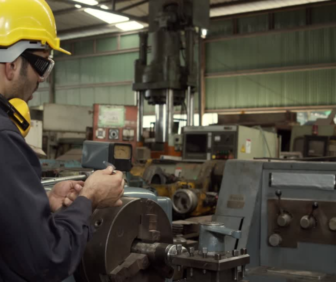
Conventional wisdom has it that there are two dominant paths to good-paying jobs and careers: STEM occupations and the skilled trades. In our last post we looked at STEM occupations including those classified as a professional trade. In this post we will focus on the proportion of good-paying Michigan jobs that are blue collar occupations, including but not limited to those classified as a professional/skilled trade. This will give us a chance to look at how prevalent are good-paying blue collar jobs irrespective of education attainment requirements.
First what do we mean by blue collar occupations? Our definition is jobs in Construction and Extraction Occupations; Installation, Maintenance, and Repair Occupations; Production Occupations; and Transportation and Material Moving Occupations.
Before we do a deep dive into how many good-paying jobs there are in these blue collar occupations, let’s look at 2019 (pre-pandemic) employment and wages in the aggregate in these four occupation sectors.
- 147,000 Michiganders worked in Construction and Extraction Occupations with a median wage of $49,540. Well above the national median of $39,810 and the state median wage of $38,680.
- 172,000 Michiganders worked in Installation, Maintenance, and Repair Occupations with a median wage of $45,870. Well above the national and state median wage.
- 476,000 Michiganders worked in Production Occupations with a median wage of $36,530. Below both the national and state median wage. Writ large blue collar factory jobs are no longer high-paid.
- 356,000 Michiganders worked in Transportation and Material Moving Occupations with a median wage of $31,940. Well below the national and state median wage.
Combined these blue collar occupations are 27 percent of 2019 Michigan payroll employment. Production on its own was 11 percent of 2019 Michigan payroll employment.
Let’s look now at the proportion of these jobs that are in good-paying occupations. First it is important to note that 64 percent of the 1,151,000 payroll jobs in blue collar occupations are in occupations with median wages below the national median. So what follows covers only 36 percent of all payroll jobs in blue collar occupations.
In a previous post we found that in Michigan’s strong 2019 economy only 44 percent of Michigan jobs are in occupations with a median wage above the national median of $39,810. For this post we will refer to jobs above the national median as good-paying jobs.
Of the 1,881,000 good-paying Michigan jobs, 419,000 (22 percent) are in blue collar occupations. The good-paying blue collar occupations are predominantly in our middle-wage category, occupations with median wages between the 50th ($39,810) and 75th percentile ($64,240) nationally.
In 2019 357,000 Michiganders worked in middle-wage blue collar occupations. 38 percent of all jobs in middle wage occupations. There were 62,000 Michiganders worked in high-wage (occupations with median wages at or above the national 75th percentile) blue collar occupations. Seven percent of all jobs in high-wage occupations.
These jobs overwhelmingly do not require a four-year degree. So for Michiganders that decide not to pursue a four-year degree blue collar occupations do provide a path to good-paying jobs and careers. They are 46 percent of the state’s employment in occupations with median wages above the national median that do not require a four-year degree.
We explored in our The preeminent path to good-paying careers post the story we should be telling all kids. That today’s high-paid jobs are concentrated in a wide variety of professional and managerial occupations, a majority of which are not in STEM fields. These occupations overwhelmingly require a four-year degree.
And in our The path to good-paying careers without a BA ain’t what you think post we look more specifically at the good-paying jobs that don’t require a four-year degree.
The research was done by ROI Insight. In both regions they conducted focus groups and internet and phone surveys of individuals with an income of at least $40,000 who do not have a four-year degree. They found:
The common belief that the way those without a four-year degree get good-paying work over a forty-year career is by learning a trade––primarily in the blue collar skilled trades, health care, and technology and engineering––in high school or soon after turns out to be true for a minority of those in good-paying jobs without a four-year degree. The occupations that enable one to earn a good living are far broader than commonly assumed.
The more pervasive path is far more ad hoc than linear. And far less planned out or predictable based on one’s first job. It is folks who develop a set of non-occupation specific skills that allow them to become valued employees that enables them to get promotions and/or the interest and ability to learn new skills that enable them to move into more lucrative occupations sometimes with their current employer, sometimes with a new employer, sometimes by going out on their own.
So the story we should be telling ourselves––and particularly our kids––is yes there are lots of good-paying jobs and careers in Construction and Extraction Occupations; Installation, Maintenance, and Repair Occupations; Production Occupations; Transportation and Material Moving Occupations. But there are even more good-paying jobs, including most of the highest-paying jobs, in non blue collar occupations.







